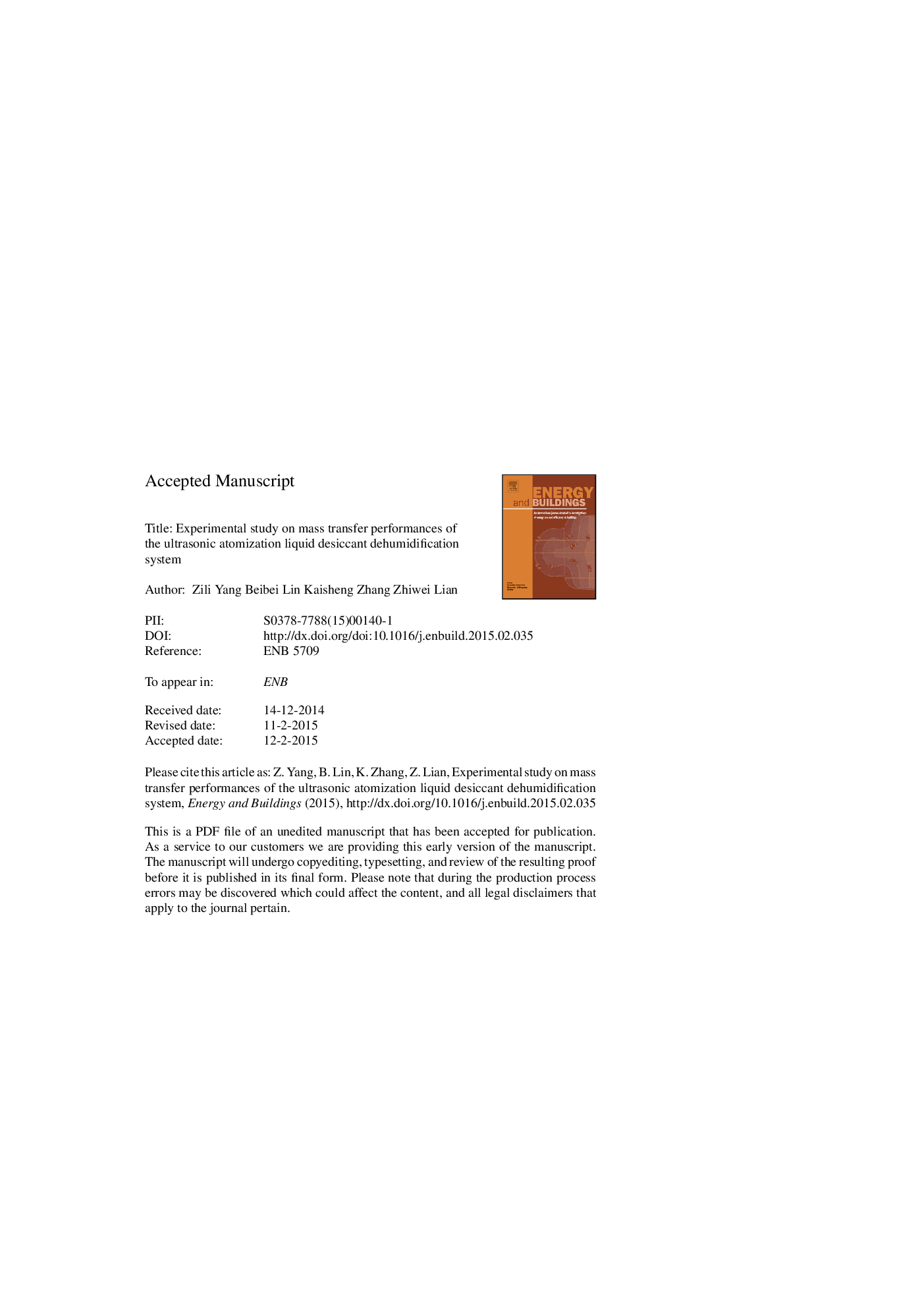| Article ID | Journal | Published Year | Pages | File Type |
|---|---|---|---|---|
| 6731842 | Energy and Buildings | 2015 | 38 Pages |
Abstract
A great deal of attention has been devoted to the liquid desiccant dehumidification system, which presents great potential in energy saving of buildings. Combined with the ultrasonic atomization technology, the desiccant solution can be atomized into tiny droplets with diameter about 50 μm, which may greatly facilitate the dehumidification process. In this work, thorough experiments were carried out to investigate the effects of air and desiccant inlet parameters on mass transfer performances of the ultrasonic atomization liquid desiccant dehumidification system (UADS), where dehumidification effectiveness, moisture removal rate and desiccant consumption rate were employed as the performance indicators. Instead of proposing empirical formulations, the Ideal dehumidification model, developed in the authors' earlier work, was employed to predict the system's performances in comparison with the experimental results. Good agreement between the experimental results and predicted values was achieved while the maximum difference of dehumidification effectiveness was less than 8%. Moreover, compared with the cross-flow packed tower, much less desiccant was consumed in present UADS and the average reduction reached up to 73.94%. The data presented in this work may help in the design of the ultrasonic atomization liquid desiccant dehumidification system and validating the feasibility of the Ideal dehumidification model in UADS.
Related Topics
Physical Sciences and Engineering
Energy
Renewable Energy, Sustainability and the Environment
Authors
Zili Yang, Beibei Lin, Kaisheng Zhang, Zhiwei Lian,
